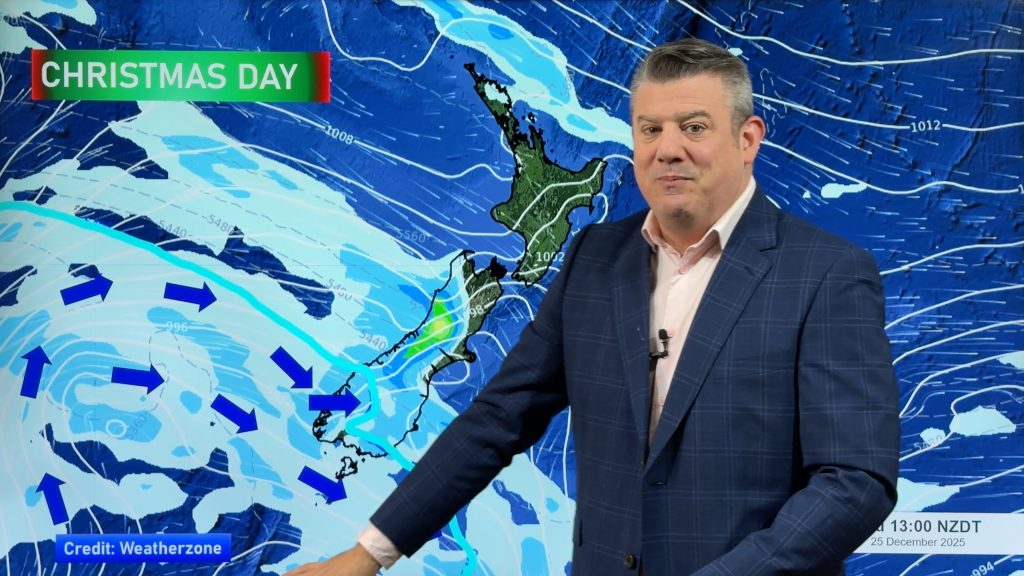
> From the WeatherWatch archives
The threat of a huge, landslide-triggered tsunami to Wellington lurks below the water only 10km off the city’s coast – but the region’s quakes haven’t come near what it would take to trigger one.
Niwa scientists recently mapped the Cook Strait Canyon – the most prominent underwater feature of the strait – to gauge how nearby earthquakes had affected the deep and vast system.
They discovered that even the ripples of the July 21 quake, which struck at a magnitude of 6.5 near one of the least stable parts of canyon, were well below the level of ground shaking needed to activate a submarine landslide.
But the scarred canyon holds evidence of large landslides in the past, and scientists are trying to determine how big “the big one” would need to be.
New research by Niwa ocean geologist Dr Joshu Mountjoy showed that about one every hundred years, a landslide in the Cook Strait region would displace 50 million cubic metres of seabed.
This amounted to four times the amount of debris that poured down the side of Mt Cook into the Tasman Glacier in 1991.
“While the landslides focused on in this study were too small and far below the sea surface to cause tsunamis, they play an important role in the development of the canyon,” Dr Mountjoy reported in Niwa’s Water and Atmosphere.
“There have been landslides 10 times bigger within the canyon walls, and we are still working to determine the hazard risk related to them.”
His research paper, to be published in a special issue of the journal Deep Sea Research Part II, was based on data collected onboard the Niwa vessel Tangaroa in 2011 and measurements of ocean currents in 2006.
It identified that sediment was being transported into the canyons by strong tidal currents, and was building up in one of the most unstable parts of the system, at a depth of around 400m.
It comes as Ministry of Civil Defence and Emergency Management next week releases its Review of Tsunami Hazard in New Zealand, the first national update of tsunami risk since 2005.
The previous report stated that in a severe scenario, Wellington could be struck by a tsunami 10.3m high, killing 2300 people, injuring 4800 and costing $5.3 billion.
A pilot survey in Wellington last summer found as few as 7 per cent of local people realised they were not going to get an official warning for a local-source tsunami, which could sweep through the city 12 minutes after the shaking stopped.
Tsunami created by submarine landslides have also proven deadly in cases around the world – a 1998 surge triggered waves up to 15m high and killed 2200 people when it slammed into a 20km section of Papua New Guinea coastline.
“Could it happen in the Cook Strait? The easy answer is yes – but the difficult question is when, because no one can tell you,” said Niwa marine geologist Dr Geoffroy Lamarche.
Scientists not only had to work with probabilistic models for earthquakes in the region, but also the probability of a landslide big enough to create a tsunami.
Dr Lamarche said a rule of thumb was that a 6.5 quake usually came close to the thrust needed, and a 7.5 event would probably cause it.
“If you want to trigger an event of the size we are talking here – tens of millions of cubic metres – you need a substantial earthquake,” he said. “It’s one of the big questions that people are still working on globally – what is the magnitude threshold to generate a landslide in the submarine environment?”
The huge 8.2 magnitude 1855 Wairarapa earthquake created a tsunami which measured more than 8m when it hit Ocean Beach near Lake Ferry, and several metres high at Lambton Quay in Wellington.
“The question is, was the generator of the tsunami simply the earthquake, or the displacement of the sea floor?”
Less than 48 hours after the July 21 quake, Niwa scientists were above the area of Cook Strait that was closest to the epicentre, but could not find any evidence of a landslide.
However, the mapping revealed worryingly fragile areas.
” There are blocks of material we think are very unstable … and maybe a magnitude 7 earthquake would be enough to generate something,” he said. “So, we don’t want to be scaremongering, but the potential for the Cook Strait morphology to generate a landslide is real.”
The Cook Strait Canyon
• Plunging to depths of 3km south of Cape Palliser, and beginning 10km off the Wellington coast, the Cook Strait Canyon is one of the largest underwater systems of its kind in the world.
• Studies by Niwa scientists have revealed the canyon is scarred by more than 150 submarine landslides and many active faults. In recent times, scientists have been trying to determine the canyon’s history and what it may pose for the future, with parts of the structure appearing unstable.
• A huge quake-made landslide – and a new study has found a landslide in the region would displace 50 million cubic metres of seabed and could happen as frequently as as each century – could create a devastating tsunami.
– Picture: supplied
– NZ Herald
Comments
Before you add a new comment, take note this story was published on 26 Sep 2013.




Add new comment
KELLYTHEWILDONE on 27/09/2013 7:35am
How about 28Th-sept-4Th of October 2013!!!!! major Megaquake somewhere in the world BIGGER THAN JAPAN 2011 and quite possibly as big as boxing day 2004 if not bigger than chile’s 8.8 Quake!!!!! AND MANY QUAKES LEADING UP TO THIS EVENT 6.0+ we will have to wait and see but im putting it out there!!!
Reply
Lianne on 29/09/2013 2:17pm
Well so far 7.8 and 7.0 In Pakistan so could be on to something there
Reply